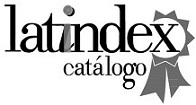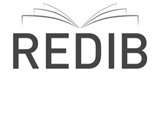Submissions
Author Guidelines
Nuevo Itinerario -Revista de Filosofía- is a publication of the Instituto de Filosofía of the Facultad de Humanidades (Universidad Nacional del Nordeste). It receives manuscripts throughout the year and publishes two annual issues (June and November): the first one, following a specific theme; the second one, with a free theme.
For its publication, it is essential that the text complies with the academic, bibliographic, formal and style requirements indicated in this section. If the manuscript does not comply with the following guidelines, it will not be considered. We suggest the use of the following template: Template for authors.docx
Authors should send their files in digital copy, in .doc format as attachments to the journal's e-mail (nuevoitinerario@hum.unne.edu.ar). Another file should be attached including: full name, ORCID, institution and e-mail, together with a brief summary of their curriculum vitae, in a maximum extension of 200 words, indicating profession, institutional relevance and line of research when applicable.
The formal guidelines to be met by each article according to each section are as follows:
A) Reviews
Nuevo Itinerario welcomes reviews of books related to philosophical research and reflection, which are no more than 3 (three) years old, prior to the publication of this journal. The length of the review will be 1500 words maximum. The format will follow the one developed below in the section on articles. It is suggested to follow the following model: Template for authors.docx
The title of the review should be adjusted to the data of the book to be reviewed, following the following structure: SURNAME, AUTHOR'S NAME, TITLE OF THE WORK, CITY, PUBLISHER, YEAR OF PUBLICATION.
The book cover scanned in high resolution, in PNG or JPG format, should be attached to the review.
B) Articles
For articles to be considered by the editorial team of Nuevo Itinerario, they must be unpublished and original works, and may belong to different fields of culture, but always from a philosophical perspective.
- Length: between 7,000 and 10,000 words, including the Abstract/Abstract and footnotes.
- The text should not include any information about the author in order to guarantee anonymity before the evaluators. This information should be attached in a separate document, taking into account: full name, ORCID, institution and e-mail, along with a brief summary of the curriculum, in a maximum length of 200 words, indicating profession, institutional relevance and research linkage of the article (with groups, projects, theses or previous writings).
- Collective articles of up to 3 (three) authors will be accepted.
- Title: centered and lowercase, in Times New Roman 14 font, in Spanish and English.
- Abstract: minimum length of 100 and maximum length of 500 words. In addition, add 5-8 keywords, separated by semicolons. An abstract in English, with the same parameters as the abstract in Spanish, must follow.
- Body of the paper: A4 sheet; Times New Roman 12 font; 1.5 line spacing; top, bottom, left and right margins of 3 cm. each; justified alignment.
- Footnotes: Times New Roman 10 font.
- Highlights: use quotation marks or italics, never underline or bold.
- Words in another language: always in italics
- Epigraphs: at the beginning of the article and/or its sections. Include the author's name at the end of the fragment. Format: right alignment, Times New Roman 11 font, without quotation marks and in italics.
- Citations: APA style (7th edition) has been chosen for both citations and bibliographical references. Short quotations (less than 40 words) should be included in the body of the text, between quotation marks; long quotations (more than 40 words) should be included in a separate paragraph, in size 11, without quotation marks and indented 1.25 points throughout.
Indirect quotation: When ideas of other authors are paraphrased or described and their words are not used verbatim. The reference is placed at the end in parentheses and it is not necessary to include the page number. E.g.: There are many ways of using the word power that lead to misunderstanding (Foucault, 2006).
Direct quotation: Reproduces literally the ideas of other authors. When referring to a single page, use “p.” and when referring to more than one page, use “pp.”.
- Direct quotations of less than 40 words: should be enclosed in quotation marks. There are two ways of doing this, depending on whether the emphasis is on an author or on a text:
- Last name + (year) + “quote” + (p.XX). For example:
As Marx (1984) states, “The consumer is no freer than the producer (...)” (p. 61).
- “Quote” + (Last name, year, p. XX). For example:
It is important to note that “The entity whose analysis is our problem is in each case ourselves” (Heidegger, 2016, p.53).
- Direct quotations of more than 40 words: they should go in independent paragraph, without quotation marks, with left indentation of 1.25 cm in block, without italics, in Times New Roman 11. The final point goes before the parenthesis of the reference. The bibliographic reference, which should be included at the end of the article, will not be taken into account to establish the maximum word count. Example:
The secret of philosophy, since it has been lost since the origins, remains to be discovered in the future.
It was therefore fatal that philosophy in history would only develop by degenerating and turning against itself, by allowing itself to be trapped in its mask (Deleuze, 2000, p. 25).
- All quotations must be accompanied by their bibliographical reference, in parentheses: authors' last name, date of publication and page number(s); for example: (Giménez, 2022, p. 38). In case of citing web pages: last name, year and paragraph; for example: (Ramírez, 2022, para. 3). In case of citing audiovisual resources: last name, year, minute; for example: (Román, 2020, 16m48s).
- The bibliography should correspond to what is actually referenced (i.e., cited and mentioned) in the body of the text and in the notes, and should be placed at the end of the text under the subtitle “Bibliographical references”. Add web addresses whenever possible.
- Adapt the bibliography to the following guidelines:
C) Bibliographic references
The APA style (7th edition) is chosen as the reference style. The bibliography should be at the end of the article. All authors cited in the body of a text or paper must coincide with the list of references; the list of references is organized in alphabetical and chronological order. An author who has not been cited in the text should never be referenced and vice versa.
- Books:
Last name, First name (year). Title. Publisher. Link
Nietzsche, Friedrich (1983). Thus Spake Zarathustra. Alianza.
- Chapters or parts of books:
Last name, First name. (year). Title of the chapter. In Last name, initials of the editor, compiler, followed by (ed.)/(comp.), Title of the book in which the chapter is included (pp. XX-XX). Publisher. Link
Guba, Egon (1983). Criteria of credibility in naturalistic inquiry. In Sacristán, J. G. and Pérez Gómez, A. (comps.), La enseñanza: su teoría y su práctica ( pp. 148-165). Akal.
- Articles in scientific journals/periodical publications
Surname, First name (year). Title of the article. Name of the journal, volume(number), pages. DOI/Link.
Conti, Romina (2009). The sense of the sublime and the abyss of the indeterminate in Kant aesthetics. Cuadernos del Sur- Filosofía, 38, 65-84. https://bibliotecadigital.uns.edu.ar/scielo.php?script=sci_arttext&pid=S1668-74342010001100004&lng=es&nrm=iso. https://bibliotecadigital.uns.edu.ar/scielo.php?script=sci_arttext&pid=S1668-74342010001100004&lng=es&nrm=iso
- Publications in web pages:
Last name, First name (Year or Date). Title of the publication. Name of the web site. Link
Lugo, Ariel (August 17, 2023). Fahrenheit 22/10. La Ribera Web. https://www.lariberaweb.com/fahrenheit-22-10/
- Thesis:
Last name, First name (Year). Title [Graduate thesis]. University and/or Repository. Link
Sisto Campos, Vicente (2000). Subjectivation, dialogues, shouts in the street: a heteroglossic approach to the study of subjectivation [Graduate thesis]. Universitat Autònoma de Barcelona.
- Conference proceedings:
Last name, First name (Year). Title. In Title of proceedings. University and/or Repository. Link
García Romero, María (2015). A ciascun'alma presa, e gentil core. Dante's amorous universe through the first sonnet of the Vita Nuova. In VII Virtual Congress on Women's History (pp. 235-262). Archivo Histórico Diocesano de Jaén. https://www.revistacodice.es/publi_virtuales/vii_congreso_mujeres/comunicaciones/14_MARIA_DEL_CASTILLO_GARCIA.pdf
- For more references, consult the guide to the 7th edition of the APA Norms. Available at: https://normas-apa.org/wp-content/uploads/Guia-Normas-APA-7ma-edicion.pdf
- Whenever it is possible to add web links/directions.
D) About the authors' responsibility
The published articles are the sole responsibility of their authors. The spelling, morphological and syntactic correction of the text will be the responsibility of each author.
- Publications in web pages:
Last name, First name (Year or Date). Title of the publication. Name of the web site. Link
Lugo, Ariel (August 17, 2023). Fahrenheit 22/10. La Ribera Web. https://www.lariberaweb.com/fahrenheit-22-10/
- Thesis:
Last name, First name (Year). Title [Graduate thesis]. University and/or Repository. Link
Sisto Campos, Vicente (2000). Subjectivation, dialogues, shouts in the street: a heteroglossic approach to the study of subjectivation [Graduate thesis]. Universitat Autònoma de Barcelona.
- Conference proceedings:
Last name, First name (Year). Title. In Title of proceedings. University and/or Repository. Link
García Romero, María (2015). A ciascun'alma presa, e gentil core. Dante's amorous universe through the first sonnet of the Vita Nuova. In VII Virtual Congress on Women's History (pp. 235-262). Archivo Histórico Diocesano de Jaén. https://www.revistacodice.es/publi_virtuales/vii_congreso_mujeres/comunicaciones/14_MARIA_DEL_CASTILLO_GARCIA.pdf
- For more references, consult the guide to the 7th edition of the APA Norms. Available at: https://normas-apa.org/wp-content/uploads/Guia-Normas-APA-7ma-edicion.pdf
- Whenever it is possible to add web links/directions.
D) About the authors' responsibility
The published articles are the sole responsibility of their authors. The spelling, morphological and syntactic correction of the text will be the responsibility of each author.
E) Submission and refereeing
Articles should be sent to nuevoitinerario@hum.unne.edu.ar following all the guidelines developed above. The file must be in .doc format; PDF files will not be received.
Two digital documents should be sent:
- One with the article, following the above guidelines, without authorx data, to be sent to the evaluators.
- The second should include: full name, ORCID, institution and e-mail, along with a brief summary of the curriculum, in a maximum length of 200 words, indicating profession, institutional relevance and research linkage of the article (with groups, projects, theses or previous writings).
The selection of the texts received is made by the Editorial Committee and by external readers chosen for their level of specialization in the topic they deal with, in order to ensure the quality of thepeer-review process. The reading of the papers is carried out according to thedouble-blind system. The decision to publish is the sole responsibility of the Editorial Committee. Authors will receive a commentary on their text, arising from the consideration of the Editorial Committee. The opinion may be:
- Publishable
- Publishable with minor modifications (does not return to the reviewer, only to the Editorial Committee).
- Publishable subject to major modifications (returns for further consideration by the evaluator)
- Not acceptable for publication
Copyright Notice
Nuevo Itinerario Magazine maintains a self-archiving policy that grants authors the freedom to deposit in repositories, institutional pages or any other electronic medium, all versions of the article and in any format.







51.jpg)

